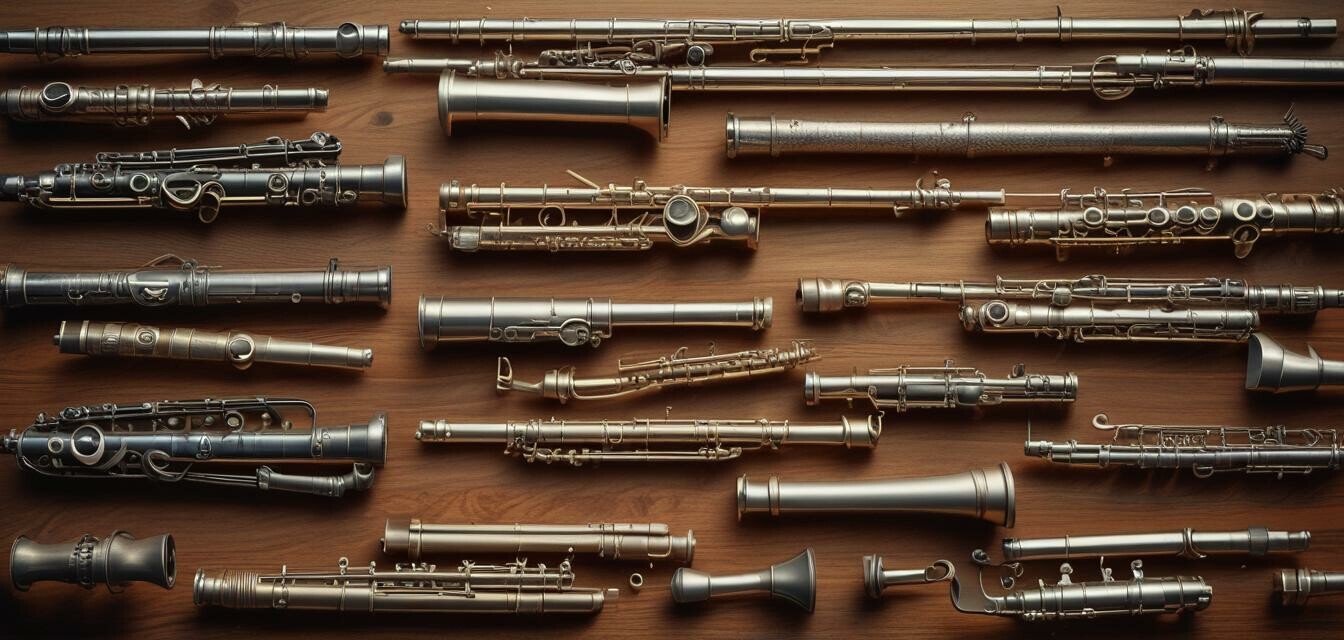
What to Look for in a Beginner Woodwind Instrument
Key Takeaways
- Consider the type of woodwind instrument that fits your needs, such as clarinet, flute, or saxophone.
- Look for instruments made from quality materials for durability and sound quality.
- Ensure the instrument is comfortable to hold and play, particularly for younger musicians.
- Check for essential accessories that may enhance your learning experience.
- Understand the importance of price points and what best suits your budget, with quality in mind.
Choosing the right woodwind instrument as a beginner can be an overwhelming experience, but with the right information, you can make a sound decision. This guide will help you navigate through the essential aspects to consider when selecting your first woodwind instrument, ensuring a smoother learning journey.
Types of woodwind instruments
Woodwind instruments are categorized mainly into two types: single-reed and double-reed instruments. Here’s a quick overview:
| Type | Examples | Playability |
|---|---|---|
| Single-reed | Clarinet, Saxophone | Generally easier for beginners |
| Double-reed | Oboe, Bassoon | More challenging, recommended for more advanced learners |
Key characteristics to consider
1. Material
The material of the instrument affects its sound quality and durability. Look for instruments made from:
- Wood: Traditional option providing warm tones, commonly used in clarinets and oboes.
- Plastic: More affordable and durable, great for younger players.
- Metal: Commonly used for flutes, offering bright, clear tones.
2. Size and weight
Choosing the right size and weight ensures comfort during play. Consider the following:
- Instruments for younger players should be lightweight and easy to hold.
- Look for brands that offer smaller, beginner models suited for children.
3. Comfort and playability
It's critical that the instrument feels comfortable in your hands. Assess:
- How the instrument fits in your hands.
- If the keys are easily accessible for your fingers.
- Whether the mouthpiece is comfortable when playing.
4. Accessories
When buying a woodwind instrument, don’t forget about essential accessories!
- Reeds: Vital for single-reed instruments like clarinets and saxophones.
- Cleaning kits: Necessary for maintaining the instrument's condition.
- Cases: Important for protecting your instrument from damage.
Understanding price points
Beginners should consider a budget that balances quality and price. Here is a breakdown of what to expect:
| Price Range | Instrument Quality | Best For |
|---|---|---|
| Under $100 | Basic, plastic instruments | Casual learners, younger students |
| $100 - $300 | Good quality, durable instruments | Serious beginners, high school students |
| $300+ | Professional quality instruments | Advanced players and serious enthusiasts |
Final considerations
Purchasing your first woodwind instrument is a significant step in your musical journey. Consider renting before buying, especially if you are unsure about committing to a specific type.
Tips for beginners
- Try out different instruments to see which feels right for you.
- Consult with a music teacher for personalized advice.
- Join beginner classes or groups to enhance your learning experience.
Pros
- Range of options tailored for beginners.
- Can easily find instruments in various price ranges.
- Improves your musical skills and creativity.
Cons
- Quality instruments can be expensive.
- May require regular maintenance and care.
Where to buy your woodwind instrument
Shopping for your woodwind instrument can be done both online and at local music stores. Check out our section on Woodwind Instruments for a selection of available options to consider.
For more information on purchasing instruments for beginners, visit our Buying Guides section.
Conclusion
Choosing a beginner woodwind instrument can be a rewarding experience. By considering the factors outlined in this guide, you'll be better prepared to select an instrument that enhances your musical journey. Enjoy the process of learning and playing your new instrument!